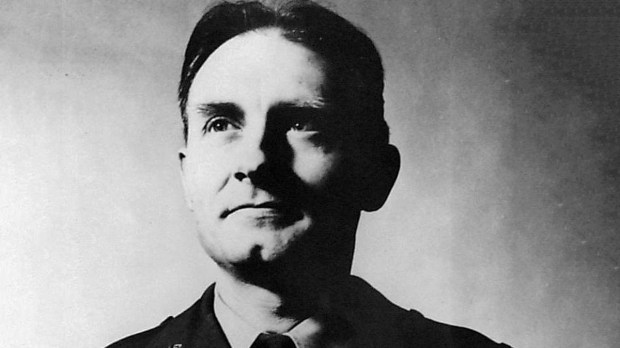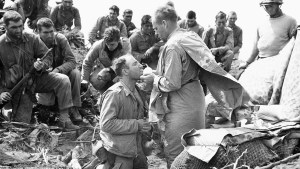Lenten Campaign 2025
This content is free of charge, as are all our articles.
Support us with a donation that is tax-deductible and enable us to continue to reach millions of readers.
Ever since his death on May 23, 1951, Servant of God Fr. Emil Kapaun has inspired many by his heroic acts of selfless courage on the battlefield. Kapaun gave his life for others, caring for soldiers during the Korean War in an extraordinary way.
Here is a brief list of the most viewed articles on Aleteia about Fr. Emil Kapaunthat help explain his life, heroic legacy. You can click on the links below to learn more information.
The life of Fr. Emil Kapaun
Kansas farm-boy ordained a priest
Emil Joseph Kapaun was born on a farm near Pilsen, Kansas, in 1916. Pilsen was a tiny town of less than 100 people named after the city of Pizen in the Czech Republic. His parents were Czech immigrants and devout Catholics. Emil, besides being an excellent student, became quite adept at repairing farm equipment and machinery. This knowledge would prove very beneficial later on when he was a prisoner of war.
Emil Kapaun was ordained a priest on June 9, 1940. In 1944, he joined the U.S. Army Chaplains Corps and was assigned to serve in Burma. He left the army in 1946 to seek an advanced degree in education. He knew in his heart that his priestly ministry was to be a chaplain so, upon receiving his Master’s Degree in 1948, he re-enlisted in the Chaplain Corps.
Father Emil Kapaun, the saint in the foxhole
Heroic legacy on the battlfield
Risked his life to save others
During the Battle of Unsan, Kapaun was serving with the 3rd Battalion of the 8th Cavalry Regiment when he was taken prisoner:
As Chinese Communist forces encircled the battalion, Kapaun moved fearlessly from foxhole to foxhole under direct enemy fire in order to provide comfort and reassurance to the outnumbered Soldiers. He repeatedly exposed himself to enemy fire to recover wounded men, dragging them to safety. When he couldn’t drag them, he dug shallow trenches to shield them from enemy fire. As Chinese forces closed in, Kapaun rejected several chances to escape, instead volunteering to stay behind and care for the wounded. He was taken as a prisoner of war by Chinese forces on November 2, 1950.
These 5 Catholic priests earned the Medal of Honor
Continued to serve POWs at the expense of his health
Refusing several chances to escape, he was taken as a prisoner of war on November 2, 1950.
Kapaun and the wounded men with him joined hundreds of other American prisoners on a forced march to a POW camp near Pyoktong.
The following Easter, Fr. Kapaun led a sunrise service for the POWs. But, spending himself for his men under harsh conditions, the priest’s health grew worse and worse, and he was left to die of malnutrition and pneumonia.
Korean War chaplain Fr. Kapaun to be interred in Kansas cathedral
A model priest
During his time as a POW, Fr. Kapaun continued to tend to the spiritual needs of his men. This task he completed even in the face of torture and “brainwashing tactics of his captors,” which he resisted. This example, Fr. Lies said, was inspirational to him as a priest and a model which he strives to emulate. Fr. Lies said:
“Chaplain Emil Kapaun put his life on the line as a good shepherd against the wolf and protected the flock of his captured soldiers, whom he tended, to the giving of his very life. He struck fear in the hearts of his atheistic tormentors who could not best his arguments or his logic against their false atheistic beliefs. They trembled at the divine grace that came from the words of this humble priest, who kept the fire of hope alive in the hearts of his men.”
Fr. Kapaun remembered as inspirational hero at Kansas funeral Mass
Awarded the Medal of Honor after his death
After his death he was awarded the Congressional Medal of Honor, the Distinguished Service Cross, the Bronze Star and many others. In 1993, Fr. Kapaun was declared a Servant of God by Pope John Paul II.
Remains of Fr. Kapaun, heroic military chaplain, were identified


